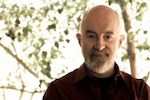- You are here:
- Home »
- Blog »
- Joint Health / Pain »
- Neck Pain and Peacekeeping
Neck Pain and Peacekeeping
“You know, I had an epidural steroid injection last week, and I feel great today. This is the best I’ve felt in three years,” exclaimed Bob, an orthopedic surgeon with one of the worst cases of cervical spondylosis I had seen in quite some time. “I’m wondering if I really need therapy now. What do you think?”
Bob’s complaints and functional level have gradually worsened over the past three years. He not only has neck pain, but pain along the inside edge of his left scapula, left upper arm and occasionally into his hand. An MRI confirmed multilevel degeneration in the cervical spine with two moderate sized posterior lateral disc herniations and a rotator cuff tear of the left shoulder.
Of course, his focus is pain, but pain is the least of his problems.
Radicular pain is caused by one of three things: inhibition of normal nerve root vascular flow, nerve root edema, or venous stasis. These three things can result from the presence of autologous nuclear material in the epidural space which creates a massive inflammatory response (high levels of phospholipase A2 (PLA2), an enzyme that controls the initial inflammatory cascade, has been demonstrated in herniated disc material from surgical samples in humans – source). Successful resolution of the pain then stems from reduction and control of the inflammatory process. A steroid is Attila the Hun of the inflammatory war and exercise is the peacekeeper.
If you stop and think about it for a minute, what has changed in Bob since the epidural other than the pain? Nothing. He has the same physical capacity which means he still has the same threshold above which he will experience symptoms. His muscles have the same strength, the same endurance, and the same recruitment pattern.
He is, essentially, the same.
Bob’s problem is the low physical capacity of his spinal tissues and the general weakness of the supporting structures. Although he feels good today, a few days of physical activity above his threshold of tolerance and he’ll very likely return to his prior painful state. However, what Bob needs most is the very thing that can do the most damage: exercise. Exercise too much, too hard and you get weaker. Exercise too little and you get weaker. Exercise just the right amount – sort of a Goldilocks approach – and bingo you get stronger, feel better, and can do more. Through the judicious use of controlled trauma (also known as exercise), Bob will raise his tissue strength and tolerance of his tissues – muscle, fascia, tendons, ligaments. He’ll keep inflammation at bay. The more he does it and the more consistent he is, the better he’ll get. Your body makes you work for your health. You have to earn it and by earning it you change other things in yourself as well. Lots of good things come from movement.
Considering the options in answering Bob, I said “Bob, where do you want to be in a year or two physically?” Bob just looked at me for an eternal minute. He said, “I see what you’re doing. You’re making me look past the pain. I’m in for whatever you think I need to do next.”
Something to keep in mind is that whatever shows up on your MRI isn’t necessarily THE problem. A lot of people, including myself, have “degenerative” changes but not everyone is symptomatic. Pain can be an indicator of something “off” in your body and often it’s more than one thing. But in almost every case, one of the problems is weakness. The pain just happens to reveal it.
Thanks for reading.

If you like this article, why not share it with a friend? If you’re interested in coaching services, please contact my colleague Laurie Kertz Kelly for a free, 20-minute Strategy Session by, clicking here. To get my Secret Weapon to fight knee, hip & back pain and stiffness, subscribe for free today.

Doug Kelsey has been a physical therapist and human movement expert since 1981. He is formerly Associate Professor and Assistant Dean for Clinical Affairs at the University of Oklahoma Health Sciences Center and the author of several books. He has conducted over 250 educational seminars for therapists, trainers, physicians, and the public and has presented lectures at national and international scientific and professional conferences. His professional CV is here.
